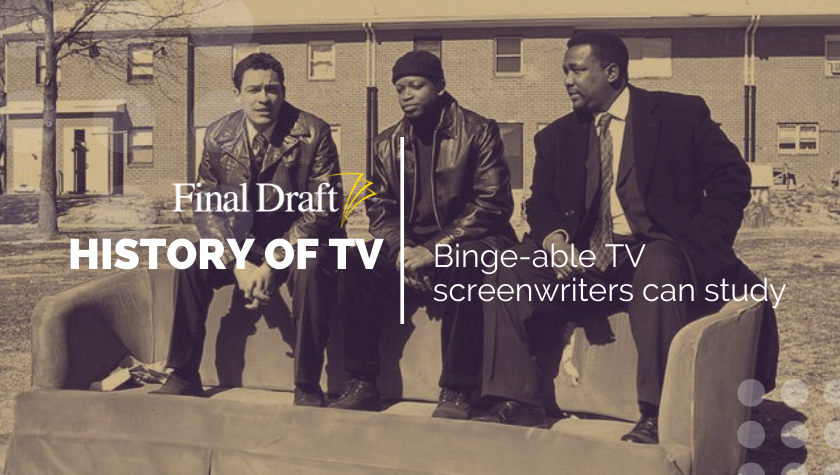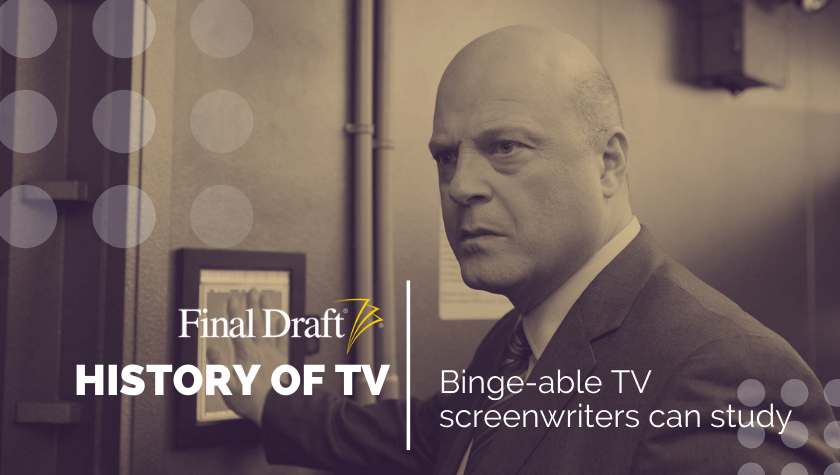History Of TV: ‘CSI: Crime Scene Investigation’ and the Beginning of the Binge-Watch
October 23, 2020
Around the time I bought my first copy of Final Draft software as a freshman, my university roommate introduced me to a show already in its second season: CSI: Crime Scene Investigation (created when acronyms weren’t such a thing yet and we still needed things spelled out). Lucky for me, there were already 23 episodes and I did the thing that’s so popular now: I binge-watched a TV show for the first time. Sure, everyone thinks Netflix invented binge-watching, but ask any procrastinating university student and they had that skill nailed long before the term was coined.
CSI debuted on Oct. 6, 2000 and is probably why “DNA” became a household term. Fans in more than 170 countries learned why blood, saliva and skin important is as evidence in solving a crime and were willing to tune in weekly for more than 300 episodes of the crime procedural to find out just whose blood, saliva and skin the team of forensic investigators was investigating on their “graveyard shift.” Because what makes murder even more mysterious? Investigating it at night.
A new angle on an old trope
It literally kept me up at night; both the literal watching episode after episode of, and the gritty circumstances that visited increasingly darker places for its murder of the week. But CSI wasn’t horror, even though it was often horrific. It was simply an investigation into why people do brutal things — through science. The procedural style structure was nothing new on TV, but through the eyes of rather … average people, you could say, behind the scenes? That was new. They made science look pretty damn sexy with those moody blue filters and slow-burn shots. The team wasn’t treated as a whole, but rather broken down into a unique and quirky bunch, each with their own way of solving crimes, so that their interactions added a further dramatic layer to the mystery already at hand. The takeaway for writers here is nothing we haven’t been told before: Home in on a subject you love, then do it in a way no one thinks they’ve seen before.
A strong story engine
CSI did a few things beautifully. Comedy-infused drama. Graphic scenes that somehow compelled intrigue rather than offended the senses. And murder. The human fascination with death and its surrounding mystery is a proven story engine; that big “why” behind it — whether it be by natural causes or nefarious circumstances — the characters and by proxy, the audience is continually searching for is the thing that can spawn a thousand storylines (or at least several seasons-worth) and create a web of interesting character dynamics. Death just doesn’t get old. Set a show about murder victims in one of the most alluring/seedy places in America? Pure genius.
The characters of CSI also did what people in Vegas do best: they reinvented themselves as old cast members were slowly swapped out for fresh blood. I’m not ashamed to admit full-on crying when they dared kill off Warrick Brown in the season nine premiere — but good for them for continually making those shake-ups of beloved characters, and even better for continuing on successfully for 15 seasons in all as original cast members left and new favorites took over. CSI even got what most shows don’t these days; the dignity of a proper (planned) finale episode in the form of a two-hour movie. Ah the days of giving a show the room to grow and mature...
So, while the characters were solid, they were rounded out by an even better story engine; one that launched several spin-offs (CSI: Miami, CSI: NY, and CSI: Cyber) and now has rumors circling that CBS is planning an event series. Good thinking, considering the original raked in on average 25 million viewers per episode and was once the most-watched show on television.
Memorable characters are in the details
That goes for your supporting cast, as well. In a procedural, the revolving door of antagonists and supporting characters is bigger than other narrative structures, but that doesn’t mean the screenwriter gets to take a break when writing those roles between their lead storylines. Oh no. Here’s where you have the opportunity to create dynamics worthy of future award-winning talent (or attract them with top-notch writing)!
While CSI made Dr. Gil Grissom (William Petersen), Catherine Willows (Marg Helgenberger), Sara Sidle (Jorja Fox), Nick Stokes (George Eads), Greg Sanders (Eric Szmanda), and Warrick Brown (Gary Dourdan) household names, there was still room in the world for other incredible characters. As the original team phased out, TV veteran Ted Danson stepped in as D.B. Russell, and even Oscar®-nominated actors like Elisabeth Shue and Laurence Fishburne joined the team.
CSI also featured cameos by John Krasinski, Jeremy Renner, Taylor Swift, and even the Biebs had a two-episode arc, among other notable faces over the years. Why? Because playing a stiff on CSI meant meaty flashbacks for the “dead person,” which the team would deduce through analyzing evidence from the crime scene.
Takeaway: no role is too small.
In retrospect
It’s only been five years since the finale, but our world has imploded since it went off air in so many ways. It’s not hard to imagine the updates: a more diverse cast and incredible new fodder thanks to this year’s headlines alone. But in its time — all 15 years of it — CSI is worth studying for its simple refusal to, well, wither and die. The familiar procedural structure and complex web of characters are what made it memorable and creating a world that’s allowed to unfold for more than a decade is what any creator can only hope for.
Happy birthday, CSI: Crime Scene Investigation! You can stream episodes of CSI on Hulu and CBS All Access.
Written by: Karin Maxey
After seeing her first big screen movie 007: License to Kill at age six, Karin naturally became obsessed with writing action-infused stories. The next time she’d see Benicio del Toro was in person, at the 68th Cannes Film Festival—he was there for the Sicario red carpet, she was there for her first produced short film in the basement of the Palais…same-same. In between, Karin earned a Creative Writing Degree and landed management at Echo Lake Entertainment. Her scripts have been a Big Break Top 3 finalist, HollyShorts Film Fest Official Selection, and a multi-Screencraft competitions semi-finalist. Karin is also a screenplay editor who delights in the process of polishing writers' work for submission. You can find her at www.writergirlkarin.com.



